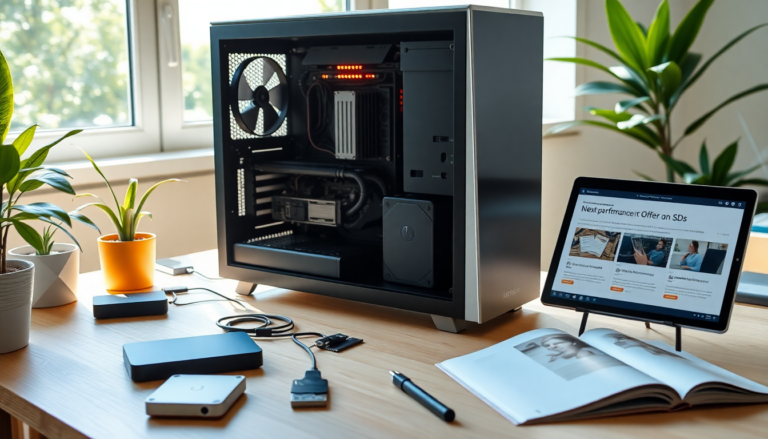Argomenti trattati
As summer heats up, it’s the perfect time for tech enthusiasts to consider upgrading their PC setups, especially when it comes to storage solutions. With solid-state drives (SSDs) becoming mainstream, savvy shoppers can take advantage of ongoing sales and discounts that promise to elevate their computing experience. But with the current economic climate, understanding the ins and outs of the SSD market is crucial for making smart purchasing decisions. From shifting tariff rates to the delicate balance of supply and demand, let’s dive into the current landscape of SSD pricing and what it means for you as a potential buyer.
Current Market Overview and Pricing Trends
The SSD market has shown a steady performance over the past few months, with prices remaining relatively stable since the fall of 2023. This consistency is particularly impressive, considering the economic turbulence earlier this year. Industry reports indicate that while prices may not be hitting the historical lows we’ve seen in previous years, they’re still competitive for reputable drives. As we gear up for major sales events like Prime Day from July 8 to 11, it’s wise for shoppers to act quickly—these deals could be among the best available for a while.
However, looming changes in tariff rates, set to kick in on July 9, add another layer of complexity to the buying landscape. If these tariffs increase the cost of imported goods, including SSDs, consumers might end up paying more as the year goes on. So, if you’re in need of an upgrade, making a purchase now could be a smart move.
Analyzing the Best Storage Options
Choosing the right SSD or external storage option involves several key factors. Take Teamgroup’s Vulcan Z line, for instance—this offers an affordable solution for users looking to expand their storage without sacrificing performance. This is especially relevant for gamers and content creators who need quick access to files but might not require the absolute fastest speeds.
Recently, the balance between supply and demand has shifted, with fewer drives available on the market, resulting in a gradual price increase throughout 2024. While this might suggest a less favorable buying environment compared to the bargains seen during major sales events in 2023, the current offerings still represent a low point since the price increases began.
If you’re considering external storage options, the 2TB Samsung T7 SSD stands out as a top choice, currently nearing its lowest price point. Investing in a high-quality external SSD can dramatically enhance performance, especially in comparison to traditional hard disk drives (HDDs).
Making Informed Purchasing Decisions
When it comes to evaluating potential storage deals, keep a sharp eye on several key criteria: performance, pricing, and meaningful discounts. A solid SSD should not only perform well but also come at a reasonable price point, even when not on sale. As a rule of thumb, look for discounts that are significant for the specific model—typically, reductions of $20 to $30 are worth noting, especially for drives that don’t often see markdowns.
Ultimately, the choice between SSD and HDD will depend on your individual needs. SSDs shine in speed and efficiency, making them ideal for primary drives, while HDDs offer larger capacities at lower prices, making them great for secondary storage solutions. If you’re working with massive files, opting for an HDD may be the most cost-effective choice.
Looking Ahead: Market Predictions
As we look toward the rest of 2025, the SSD market may face additional challenges due to potential tariff reinstatements by the current administration. Should these tariffs come into effect, they could drive up the costs of SSDs, making it even more crucial for consumers to time their purchases wisely. The smart approach would be to invest in necessary upgrades before any potential price increases take hold.
In conclusion, staying informed about the current trends and dynamics of the SSD market is essential for anyone looking to enhance their tech setup this summer. By keeping an eye on pricing, recognizing the value of quality drives, and anticipating market shifts, you can make informed decisions that will benefit your computing experience both now and in the future.

